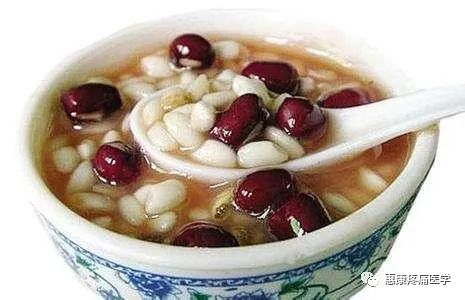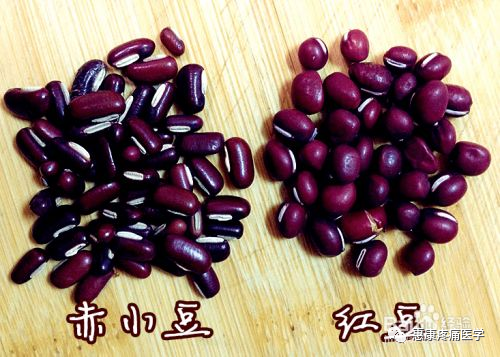
Traditional Chinese Medicine (TCM) believes that the spleen can transform and transport dampness. The spleen prefers dryness and dislikes dampness; if the spleen yang is invigorated, the spleen functions well, and the transformation of dampness is normal, then damp evil is less likely to cause disease. Conversely, when dampness is excessive, it can lead to illness, and patients often present with symptoms such as dizziness, heaviness in the limbs, body aches, difficulty in joint movement, chest tightness, abdominal distension, nausea, poor appetite, loose stools, and a thick tongue coating.
What are the specific manifestations?

Among the “Six Excessive Evils” of wind, cold, heat, dampness, dryness, and fire, dampness is the most difficult to treat. Dampness can transform into cold dampness when encountering cold, into damp-heat when encountering heat, and into wind-dampness when encountering wind. When dampness accumulates under the skin, it can lead to obesity.


What are the harms of excessive dampness?

With the changes in modern lifestyles, people tend to enjoy rich and heavy foods, eat barbecued food, drink cold beer, consume cold drinks, and have a preference for salty flavors. Additionally, using air conditioning in summer leads to an increased accumulation of dampness in the body.
Excessive dampness can lead to various diseases, including allergies, eczema, athlete’s foot, and gynecological inflammation.
1. Joint Damage
When dampness enters the joints and encounters cold, it forms cold dampness, which is a significant cause of inflammation and joint pain.
2. Leucorrhea Disorders
Excessive dampness in the body can lead to spleen deficiency, causing dampness to settle down, resulting in increased and abnormal leucorrhea in women, which can lead to inflammation in severe cases.
3. Menstrual Irregularities
Women who frequently live in damp environments or are often exposed to dampness may have a weaker constitution, experiencing fatigue in the limbs, low-grade fever, scanty menstruation, and dysmenorrhea before and after their menstrual period.
4. Obesity
Dampness accumulating under the skin can affect the metabolism of skin cells, reducing fat burning efficiency, leading to obesity.
5. Impact on Excretion
Excessive dampness can cause an increase in bowel movements, with a feeling of incomplete evacuation.

How to regulate dampness?

1. Exercise
People with excessive dampness often lack exercise. Physical activity helps to invigorate blood circulation and enhance water metabolism.
2. Light and Moderate Diet
The gastrointestinal system is related to nutrition and water metabolism; the best approach is a balanced and moderate diet.
3. Nourishing the Spleen and Stomach is the Fundamental Way to Eliminate Dampness
TCM dietary therapy for dampness elimination primarily uses red beans (Chi Xiao Dou) and coix seeds (Yi Yi Ren). The brilliance of this formula lies in using red adzuki beans (Chi Xiao Dou), not the common red beans. Coix seeds are cold in nature and can harm the spleen, so they must be complemented with buckwheat (Qiao Mai) and kudzu root (Ge Gen), forming Ge Gen Tang. This formula nourishes the spleen and stomach, works synergistically, and can enter the lung and spleen meridians, benefiting qi, harmonizing the stomach, moistening the lungs, and stopping cough. Only by consuming it this way can the true effects be realized. Since the root cause of dampness lies in the insufficient transformation function of the spleen and stomach, after eliminating excess dampness, it is also necessary to nourish the spleen and stomach. Additionally, some dietary therapies can achieve the effect of strengthening the spleen and eliminating dampness.

Methods for Dietary Therapy to Eliminate Dampness:

Dampness-eliminating Congee:
【Ingredients】30g red adzuki beans (Chi Xiao Dou), 20g each of white hyacinth bean, coix seed (Yi Yi Ren), cotton flower, and water chestnut, 10g each of lantern flower and Sichuan rhizome, 15g of red poria (Chi Fu Ling).
【Preparation】Wash Sichuan rhizome, red poria, cotton flower, and lantern flower, then decoct in water until 2 bowls remain. Strain to obtain the liquid, then add red adzuki beans, white hyacinth bean, coix seed, and water chestnut to cook into congee.
【Usage】Consume warm.
【Efficacy】Clears heat and eliminates dampness. Suitable for symptoms caused by summer heat, such as difficulty urinating, gastrointestinal discomfort, and abdominal distension.
【Precautions】Not suitable for those with constipation.
Cooling and Spleen-nourishing Dampness-eliminating Soup
【Ingredients】Honey dates, red adzuki beans, fresh ginger, coix seed, hyacinth bean, kudzu root, and tangerine peel.
【Function】Clears heat, relieves summer heat, and strengthens excretory and digestive functions.
【Usage】(For 2-4 servings) Add 6 ounces of lean meat to water along with all soup ingredients and 6 bowls of clear water into a pot. Simmer for about two hours, adding salt to taste.

Green Bean and Lily Rice Congee:
Ingredients: 30g green beans, 30g fresh lily, 50g rice grains, 100g japonica rice, 80g rock sugar.
Preparation:
(1) Rinse rice grains, green beans, and japonica rice, soak for 20 minutes; clean and chop the lily;
(2) In a boiling pot, add green beans and rice grains, boil for a few minutes, then simmer until the beans bloom; add japonica rice and lily, cook into congee, and add rock sugar to finish.
This is a typical dietary therapy congee for summer to strengthen the spleen, promote bowel movements, and eliminate dampness.

How to distinguish between red adzuki beans and red beans


Red adzuki beans, also known as red beans or small red beans, are the dried mature seeds of the leguminous plant red adzuki bean or red bean. TCM believes that red adzuki beans are sweet, sour, and neutral in nature, entering the heart, spleen, and small intestine meridians, with functions of strengthening the spleen, benefiting qi, promoting urination, eliminating dampness, and detoxifying pus. Regular consumption of red adzuki beans can clear the blood, eliminate internal organ fatigue, and is particularly beneficial for patients with heart and kidney diseases.Red beans, also known as love beans, are the mature seeds of the leguminous plant love bean, widely distributed in tropical regions. TCM believes that this product is pungent, bitter, and neutral, toxic, entering the heart and lung meridians, with functions of clearing heat and detoxifying, dispelling phlegm and killing parasites, and nourishing yin blood. It can relieve wind, clear heat, dry dampness, stop itching, and nourish the skin, suitable for conditions such as sores, swelling, and mumps.Red beans have the effects of calming the heart and nourishing the spirit, strengthening the spleen and benefiting the kidneys. When combined with lotus seeds and lilies, they further solidify essence, benefit qi, stop bleeding, and strengthen bones, treating lung dryness and dry cough, enhancing internal organ vitality, and increasing physical strength.Red adzuki beans have good effects on promoting bowel movements, lowering blood pressure, reducing blood lipids, regulating blood sugar, preventing stones, and aiding in weight loss. However, not everyone is suitable for consuming red adzuki beans to supplement nutrition. Those who should avoid them include individuals with yin deficiency without damp-heat and those with clear, frequent urination; those bitten by snakes should avoid red adzuki beans for a hundred days. Additionally, those with frequent urination and those who are thin should not consume them, especially children with poor appetite, inadequate nutrition, and loose stools. Adults with weak constitutions who are taking tonifying herbs should also avoid consuming red adzuki beans simultaneously.

More exciting content to be continued… …

Scan to follow us
Get more medical knowledge
Senior doctors available for online consultation


